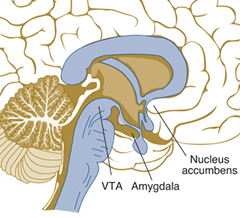The Twitter Spot in Your Brain
 These days, you can’t go online without bumping into someone styling himself as a social media guru, a Facebook expert, or a power user of Twitter. And, if you check their online profiles, they actually do have thousands of friends and followers. But are these real friends, or did the supposed expert socializers simply crank up an automation software to rapidly build their follower base? Surprisingly, how capable of being social a person is can be revealed by a brain scan.
These days, you can’t go online without bumping into someone styling himself as a social media guru, a Facebook expert, or a power user of Twitter. And, if you check their online profiles, they actually do have thousands of friends and followers. But are these real friends, or did the supposed expert socializers simply crank up an automation software to rapidly build their follower base? Surprisingly, how capable of being social a person is can be revealed by a brain scan.
A new study has found that individuals with larger amygdalas (an area of the brain usually associated with fear and other emotions) have more friends and more complex social networks.
Magnetic resonance imaging scans found a positive link between big amygdalas and the richest social lives. Professor Lisa Barrett, a psychologist at Northeastern University in Boston, Massachusetts, reported the findings in the journal Nature Neuroscience.
She said they were consistent with the social brain theory, which suggests the human amygdala evolved to deal with an increasingly complex social world. Other studies of primates have shown that those living in larger groups tend to have larger amygdalas. [From The Daily Mail.]
What is not yet known is the nature of the cause/effect relationship. Do big amygdalas enable one to build bigger networks of friends? Or does having a large number of friends actually influence the size of the amygdala?
While you likely won’t be able to get an fMRI scan of your next social media expert’s brain, this is fascinating research – it actually demonstrates a link between the size of a specific brain structure and differences in human behavior.
